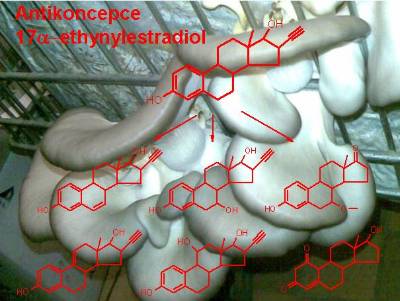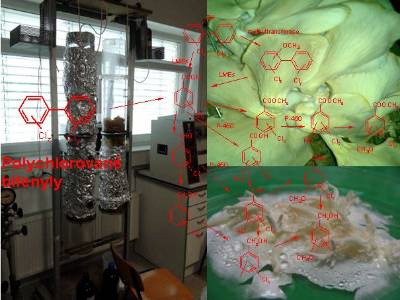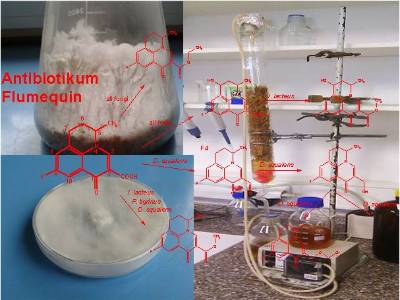Academy of Sciences of the Czech republic › Science and Research › Significant and interesting projects › Life and Chemical Sciences Division
Degradation of new environmental contaminants (endocrine disrupting compounds) by fungi and its possible application
Endocrine disruptors (EDs) are members of a broad class of environmental organopollutants. EDs are highly biologically active chemicals with potential to elicit negative effect on endocrine systems of humans and wildlife even at very low concentrations and therefore the presence of these compounds in the environment represents serious harm for animals, humans and for the whole ecosystem. These exogenous agents interfere with the synthesis, secretion, transport, binding, action or elimination of natural hormones which are responsible for maintaining homeostasis in the body, sexual development and/or behavior. EDs encompass a variety of substances including mammalian hormones (estrogens, androgens), as well as manmade substances such as synthetic hormones, pharmaceuticals, chlorinated pesticides, persistent organic pollutants (polychlorinated biphenyls, dioxins, DDT), detergent components (alkylphenols), personal care products (triclosan) and plasticizers (bisphenol A). The most reported substances in the literature are those that interfere with female sexual i.e. estrogenic system. However, there are some types of substances mimicking or blocking the action of male sexual hormones or the thyroidal system and others. In addition some substances may affect multiple hormonal pathways. The endocrine system is maintained by a supportive regulatory mechanism, which is very sensitive to disrupting effects. The exposure to EDs is very dangerous especially for young organisms, which do not possess the ability to regulate the changes in the endocrine system, thus leading to irreversible consequences. EDs are found in the environment in trace concentration levels of ng to µg per liter or gram of solid matrices. However, even such low concentrations are sufficient to affect hormonal balances. In case EDs interfere with the estrogenic system (especially upon an increase of the estrogenic activity) they might cause early sexual maturation, elevated incidence of breast and prostate cancer, improper development of sexual organs and generally with increasing reproduction problems, including human population. Long-term persistency of EDs in wastewater treatment plants (e.g. contraceptive compound 17α-ethinylestradiol) and their excessive production (e.g. bisphenol A is one of the most produced chemical compounds in the world present in a high number of plastic materials) represent serious problems.
In the frame of research performed at Laboratory of Environmental Biotechnology, Institute of Microbiology, AS CR, v.v.i., alternative and more effective ways of ED decomposition and removal from the environment are studied. We are especially focused on ligninolytic fungi (called also white rot fungi) that possess a unique set of enzymes (biological catalysts). These enzymes are able to decompose even very stable organic contaminants such as polychlorinated biphenyls, some pharmaceuticals or contraceptive compounds. One of the most efficient fungi is the oyster mushroom (Pleurotus ostreatus) that is extensively cultivated for culinary purposes. After fruit bodies harvesting, a huge amount of straw substrate containing fungal mycelia is disposed as a waste. However, this material is suitable as filling for fungal bioreactors e.g. for decontamination of industrial wastewaters or for application in soil contaminated e.g. with polychlorinated biphenyls. In the frame of this research, we succeeded in selecting efficient strains of Pleurotus ostreatus and we partially clarified decomposition mechanisms of the contaminants (17α-ethynylestradiol, antibiotics, polychlorinated biphenyls). This research is further pursued in cooperation with several companies from the Czech Republic involved in environmental clean-up management; however, beside the basic research, we are trying to develop also original biotechnological approaches for the decontamination of wastewaters and polluted soils.
Assoc. Prof. Tomas Cajthaml, Ph.D.
Head of Laboratory of Environmental Biotechnology
Institute of Microbiology AS CR
Videnska 1083
CZ-14220 Prague 4
Czech Republic









